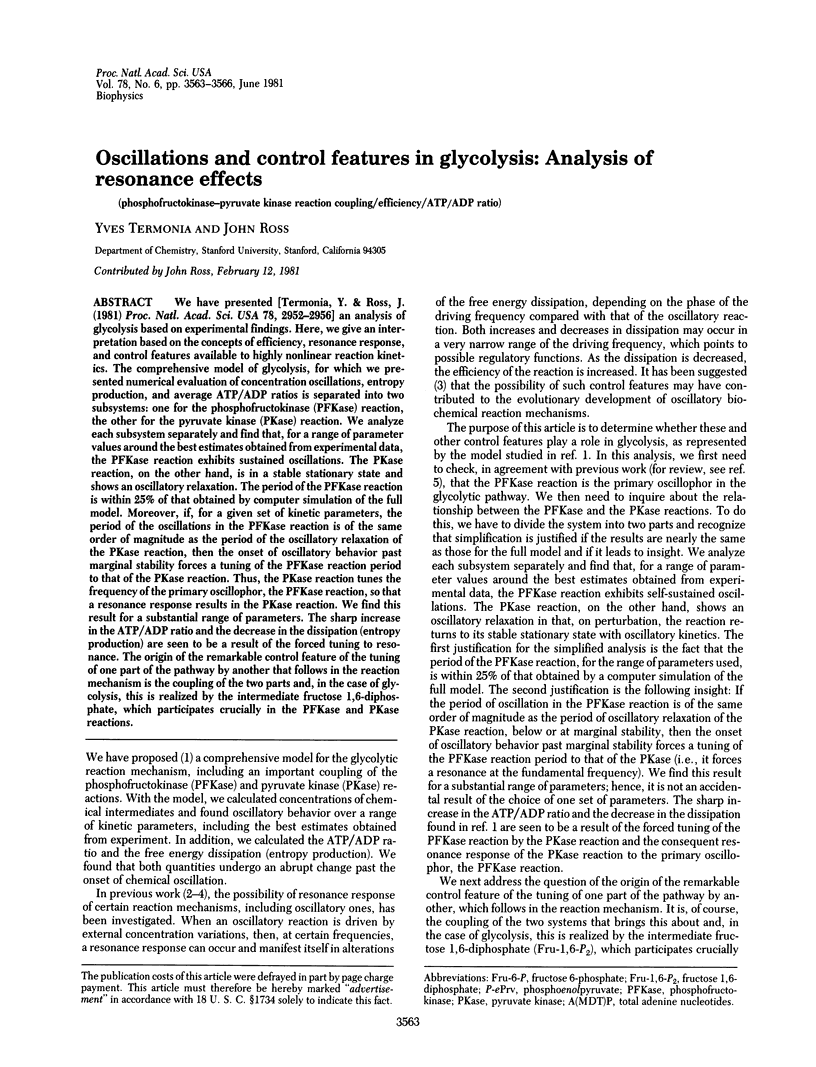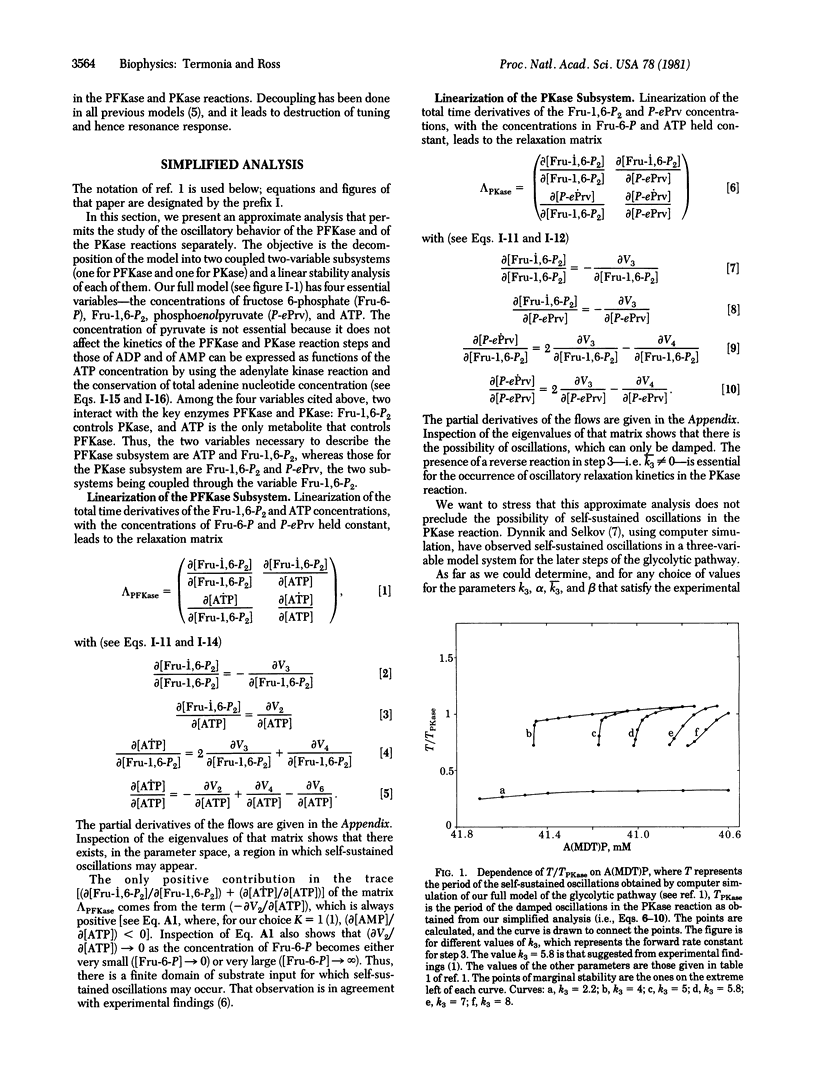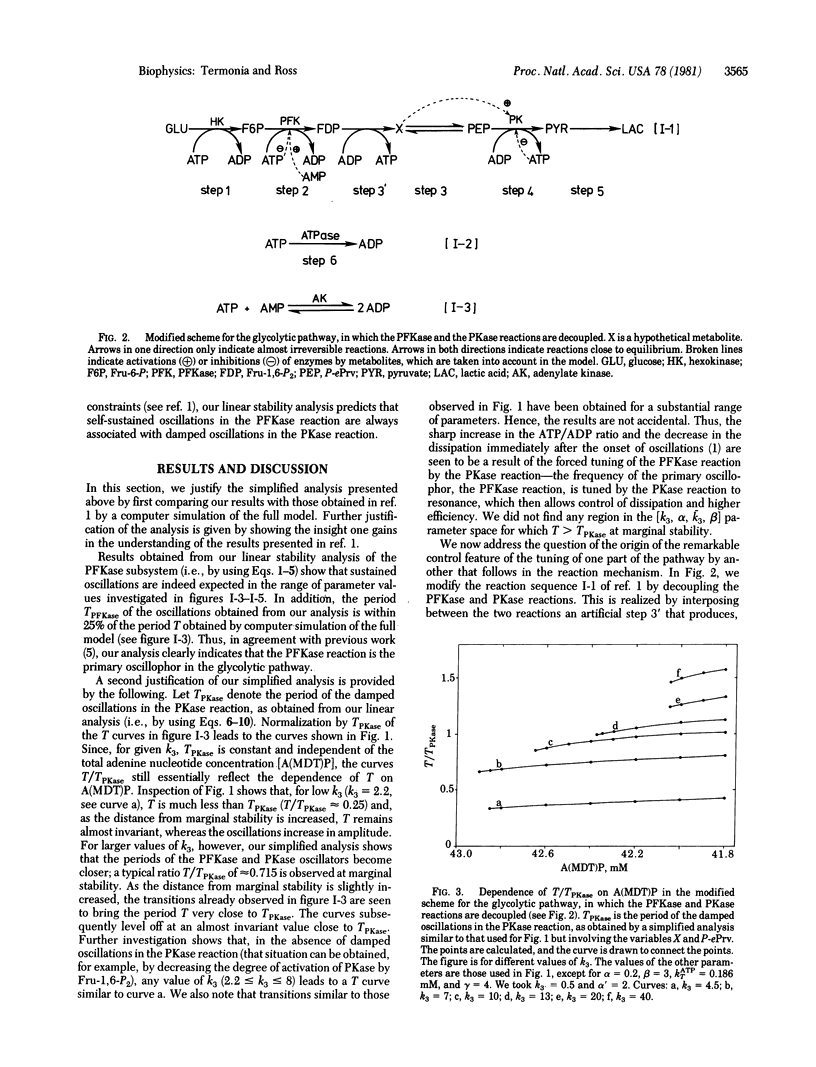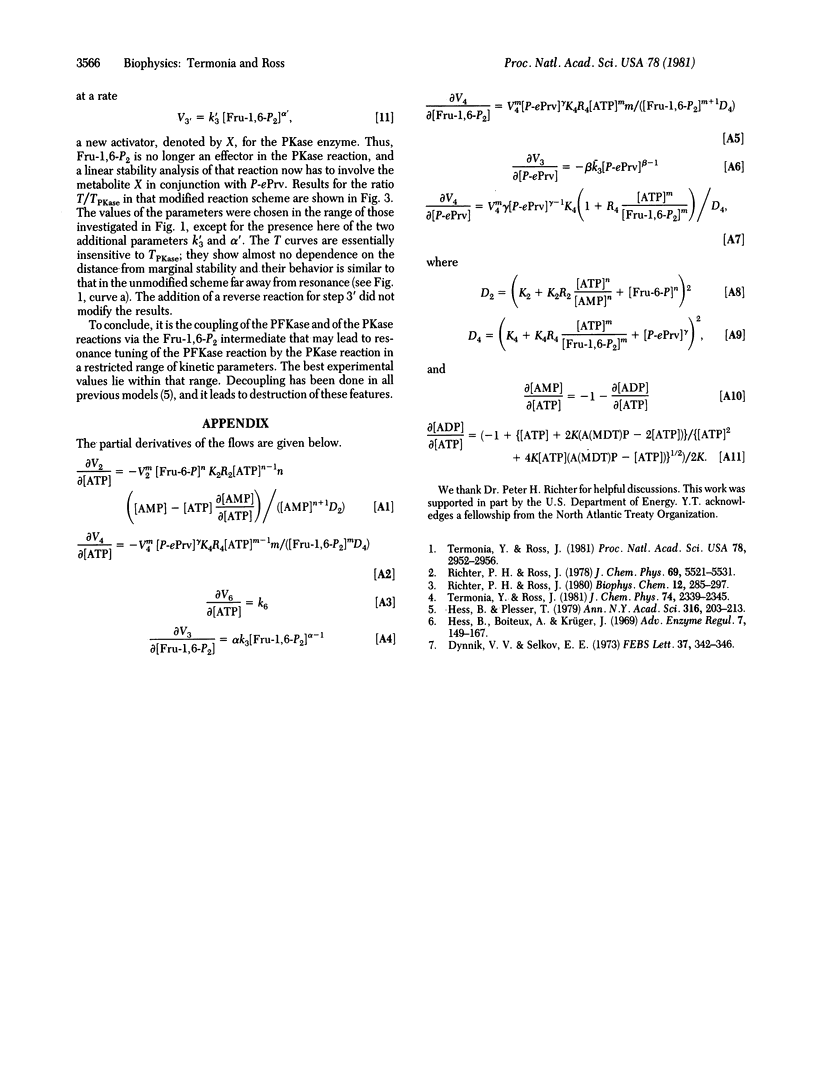Abstract
We have presented [Termonia, Y. & Ross, J. (1981) Proc. Natl. Acad. Sci. USA 78, 2952-2956] an analysis of glycolysis based on experimental findings. Here, we give an interpretation based on the concepts of efficiency, resonance response, and control features available to highly nonlinear reaction kinetics. The comprehensive model of glycolysis, for which we presented numerical evaluation of concentration oscillations, entropy production, and average ATP/ADP ratios is separated into two subsystems: one for the phosphofructokinase (PFKase) reaction, the other for the pyruvate kinase (PKase) reaction. We analyze each subsystem separately and find that, for a range of parameter values around the best estimates obtained from experimental data, the PFKase reaction exhibits sustained oscillations. The PKase reaction, on the other hand, is in a stable stationary state and shows an oscillatory relaxation. The period of the PFKase reaction is within 25% of that obtained by computer simulation of the full model. Moreover, if, for a given set of kinetic parameters, the period of the oscillations in the PFKase reaction is of the same order of magnitude as the period of the oscillatory relaxation of the PKase reaction, then the onset of oscillatory behavior past marginal stability forces a tuning of the PFKase reaction period to that of the PKase reaction. Thus, the PKase reaction tunes the frequency of the primary oscillophor, the PFKase reaction, so that a resonance response results in the PKase reaction. We find this result for a substantial range of parameters. The sharp increase in the ATP/ADP ratio and the decrease in the dissipation (entropy production) are seen to be a result of the forced tuning to resonance. The origin of the remarkable control feature of the tuning of one part of the pathway by another that follows in the reaction mechanism is the coupling of the two parts and, in the case of glycolysis, this is realized by the intermediate fructose 1,6-diphosphate, which participates crucially in the PFKase and PKase reactions.
Full text
PDF



Selected References
These references are in PubMed. This may not be the complete list of references from this article.
- Hess B., Boiteux A., Krüger J. Cooperation of glycolytic enzymes. Adv Enzyme Regul. 1969;7:149–167. doi: 10.1016/0065-2571(69)90016-8. [DOI] [PubMed] [Google Scholar]
- Hess B., Plesser T. Temporal and spatial order in biochemical systems. Ann N Y Acad Sci. 1979;316:203–213. doi: 10.1111/j.1749-6632.1979.tb29470.x. [DOI] [PubMed] [Google Scholar]
- Richter P. H., Ross J. Oscillations and efficiency in glycolysis. Biophys Chem. 1980 Dec;12(3-4):285–297. doi: 10.1016/0301-4622(80)80006-8. [DOI] [PubMed] [Google Scholar]
- Termonia Y., Ross J. Oscillations and control features in glycolysis: numerical analysis of a comprehensive model. Proc Natl Acad Sci U S A. 1981 May;78(5):2952–2956. doi: 10.1073/pnas.78.5.2952. [DOI] [PMC free article] [PubMed] [Google Scholar]


